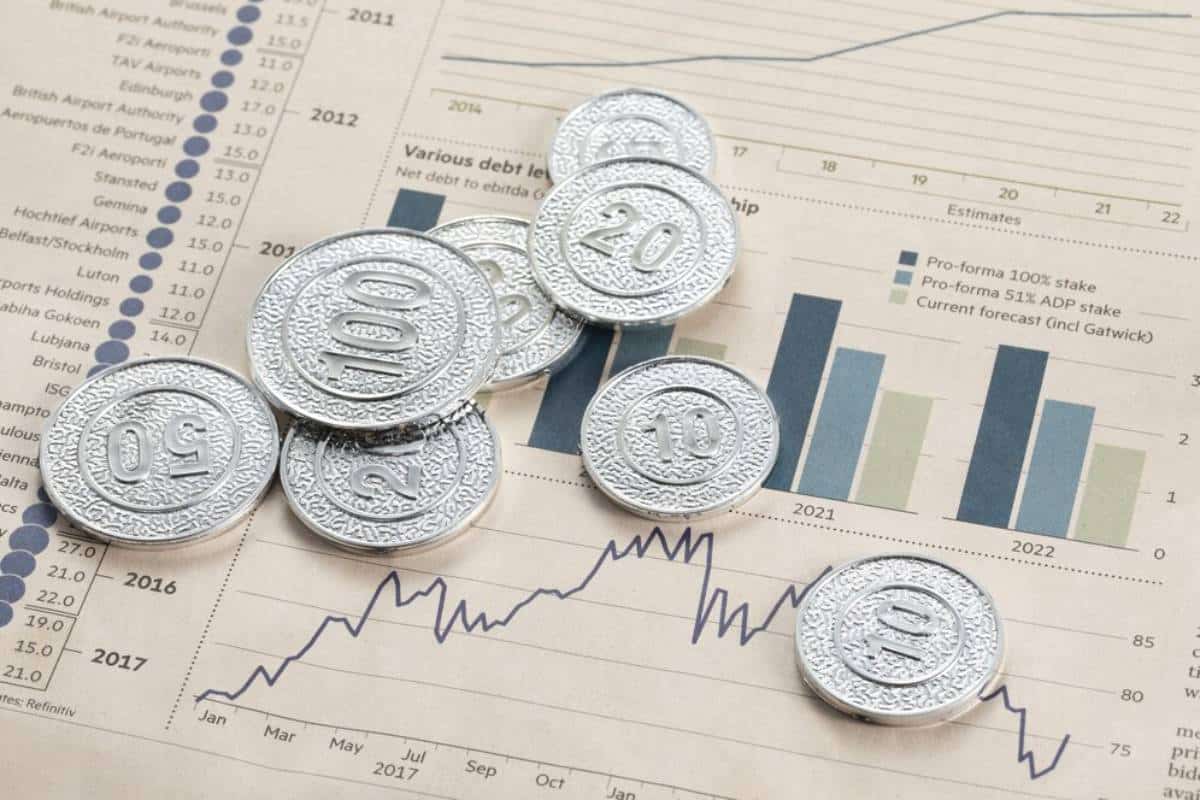
How to Invest in Commodities for Portfolio Diversification
Today’s financial world is changing. Investors want to diversify their portfolios beyond just stocks and bonds. Commodity investing can hedge against inflation and market swings. It also gives access to real assets. Investing in commodities can boost your long-term financial plan. This is true if you like precious metals, energy, or farm products.
Pro Tip: Invest in gold and silver during economic uncertainty to protect wealth.
Quick Guide
- Understand Commodity Investment Methods: Choose between physical assets, ETFs, futures, stocks, or CFDs.
- Set Your Investment Goals: Decide if you want inflation protection, stability, or speculative gains.
- Research Market Trends: Stay informed on supply-demand factors, geopolitical events, and economic conditions.
- Choose the Right Commodities: Metals for safety, energy for growth, and agriculture for seasonal opportunities.
- Diversify Your Portfolio: Spread investments across different commodities to reduce risk.
- Select a Reliable Broker or Platform: Ensure low fees, strong security, and access to various commodities.
- Monitor and Adjust Your Strategy: Track market trends and rebalance your portfolio as needed.
Important Consideration: Commodity prices can fluctuate significantly.
Core Concept
What Are Commodities?
Commodities are raw materials or basic agricultural products. They can be bought and sold. They are typically classified into four main categories:
- Metals: Gold, silver, platinum, and industrial metals like copper.
- Energy: Oil, natural gas, and renewable energy resources.
- Agriculture: Wheat, corn, coffee, and livestock.
- Soft Commodities: Cocoa, sugar, and cotton.
Investing in commodities can diversify risk. It also protects against inflation and offers chances for long-term capital growth.
Step-by-Step Guide

1. Explore the Exciting World of Commodity Investment
Diving into commodity investments can be a thrilling adventure with numerous paths to take:
- Physical Commodities: Think gold bars and silver coins — tangible treasures you can hold.
- Commodity Futures and Options: These intriguing contracts allow you to wager on future price shifts.
- Exchange-Traded Funds (ETFs): These nifty creatures give you commodity exposure without ownership hassles.
- Commodity Stocks and Mutual Funds: Invest in the companies that mine and trade commodities.
- Commodity CFDs: Trade price fluctuations without clinging to any physical asset.
2. Define Your Investment Aspirations
Pinpointing your investment goals is the compass that guides your choice:
- Is inflation your nemesis, and do you need a hedge?
- Seeking quick, speculative profits or long-lasting gains?
- What’s your risk tolerance — a tightrope walker or a cautious traveller?
3. Delve into Market Trends and Influences
Just like the tides, commodity prices sway with various forces:
- Supply and demand dances – Surpluses and shortages can sway prices dramatically.
- Geopolitical storm clouds – Conflicts and political upheaval shake energy and metal prices.
- Economic signals – Inflation, interest rates, and GDP growth shape commodity landscapes.
- Weather whims – Agricultural goods can falter or flourish under changing climate conditions.
4. Curate the Ideal Commodities for Your Portfolio
Choosing the right commodities requires reflection on risk and goals:
- Gold and Silver: Perfect for the cautious investor clinging to safe havens.
- Oil and Gas: A thrilling ride for those who embrace volatility.
- Agricultural Commodities: Seasonal gems that shine during specific times of the year.
5. Spread Your Wings with Diversification
Avoid the temptation to put all your eggs in one basket. Instead, cast a wide net across commodity categories:
- A symphony of metals, energy, and agriculture can harmonise your investment risks.
- Consider ETFs or mutual funds — diverse options that boost your portfolio’s resilience.
6. Choose a Dependable Trading Platform or Broker
In the realm of commodity trading, your broker is your trusted guide:
- Low fees – Opt for platforms that maximise your hard-earned returns.
- Robust security measures – Protect your assets like they’re buried treasure.
- A variety of commodities – A cornucopia of options spurs better investment opportunities.
7. Stay Vigilant and Adjust Your Strategy
Commodity markets are like the wind, ever-changing and unpredictable. Remain informed and ready to pivot:
- Keep an eye on market trends, economic reports, and geopolitical events shaping the price landscape.
- Rebalance your portfolio as needed based on performance and evolving financial objectives.
Best Practices & Additional Insights

Use ETFs for Diversification
ETFs let investors access many commodities. This way, they avoid handling physical assets or complicated contracts.
- Commodity-based ETFs track indices, reducing individual commodity risks.
- They offer liquidity and lower transaction costs compared to direct investments.
Consider Commodity Indices
Commodity indices show how the market is doing. They give a wide view of price trends in various commodities.
- Examples include the Bloomberg Commodity Index and the S&P GSCI Index.
Avoid Emotional Trading
- Stick to your investment strategy and avoid panic selling during price fluctuations.
- Use stop-loss and take-profit orders to manage risk effectively.
Allocate Only a Portion of Your Portfolio to Commodities
- Most financial advisors recommend 5-15% allocation to commodities.
- Diversify with traditional assets like stocks and bonds to create a balanced portfolio.
FAQs
1. Is investing in commodities safe?
While commodities can provide diversification and inflation protection, they are also highly volatile. Proper research and risk management are essential.
2. How much of my portfolio should be in commodities?
Most financial advisors recommend 5-15% allocation, depending on risk tolerance and investment goals.
3. Are commodities a good hedge against inflation?
Yes. Precious metals like gold and silver have historically acted as a hedge against inflation.
4. Can beginners invest in commodities?
Yes. ETFs and mutual funds are excellent choices for beginners. They offer commodity exposure without needing to own them directly.
5. What is the best commodity to invest in?
It depends on your risk appetite and investment goals.
- Gold and silver are safer options.
- Oil and agricultural commodities can be more volatile but offer higher returns.
Conclusion: Strengthen Your Portfolio with Commodity Investments

Commodities are the knights in shining armour for your portfolio. They stand guard against inflation’s sneaky advances. To forge a robust investment strategy, choose your assets wisely. Implement savvy investment methods and keep your finger on the market’s pulse. Investing in gold, oil, or agriculture nourishes your finances as they flourish. Plus, they sprinkle much-needed stability onto your wealth, creating a harmonious balance.